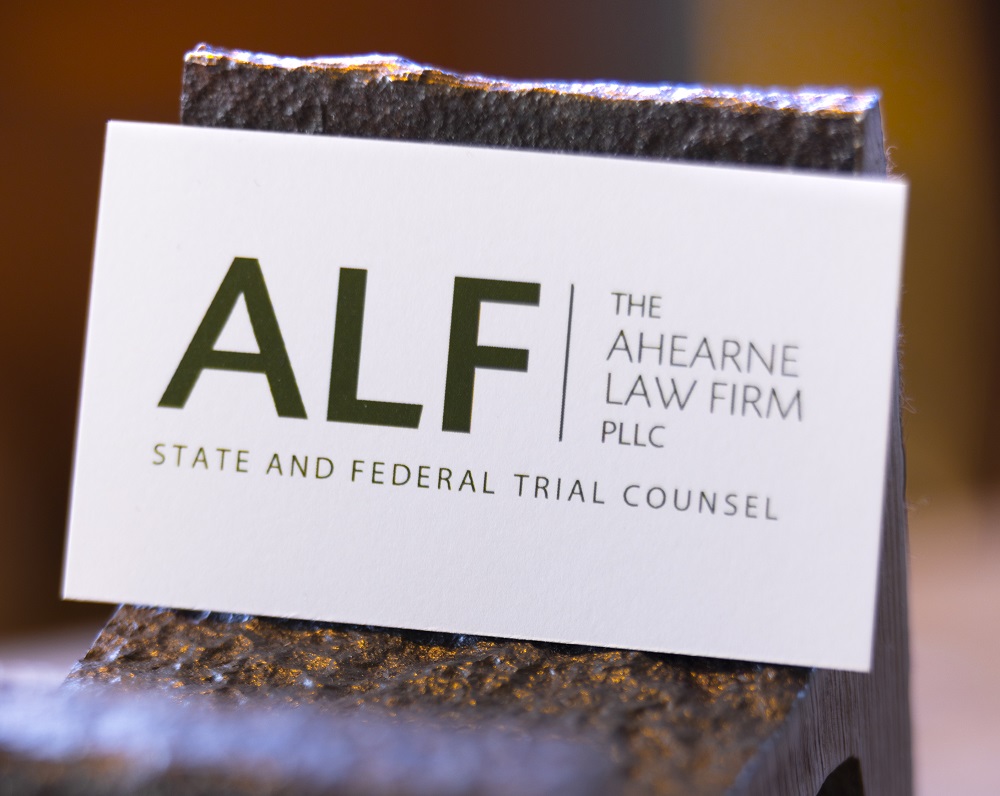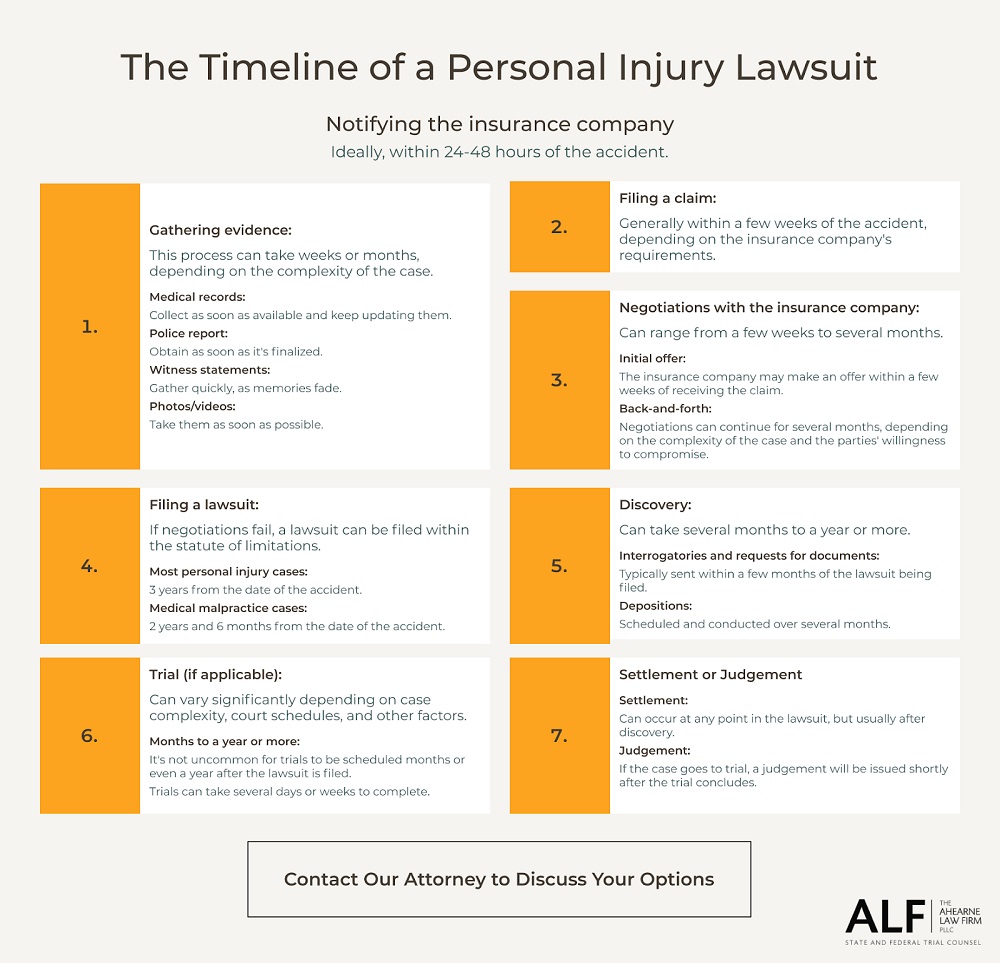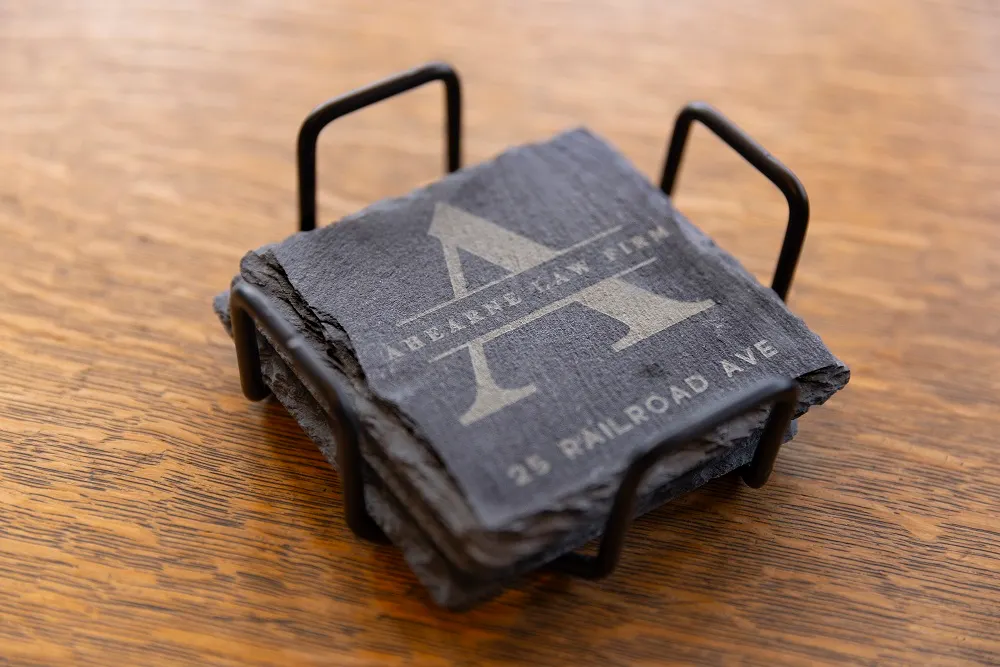Navigating the New York legal system after a personal injury can be a challenging experience. But if you’ve been injured due to someone else’s negligence, you may be entitled to compensation for your medical expenses, lost wages, and pain and suffering.
Whether you’ve been involved in a car accident, suffered a slip and fall, or experienced a workplace injury, understanding your rights and the legal process is crucial. That’s why this guide will walk you through the essential steps of filing a personal injury claim and navigating the personal injury suit process in New York.
If you’re looking for a personal injury lawyer serving New York and the Hudson Valley region, The Ahearne Law Firm, PLLC, can provide top-flight legal guidance and advocacy to help you protect your rights and seek the compensation you deserve.
Understanding Your Rights After a Personal Injury

The foundation of any personal injury lawsuit is the concept of negligence: the idea that someone’s carelessness or failure to act reasonably caused your injuries.
To establish negligence, you need to demonstrate:
- Duty of Care: The other party had a legal obligation to act responsibly toward you.
- Breach of Duty: The other party failed to meet that standard of care.
- Causation: The other party’s actions directly caused your injuries.
- Damages: You suffered actual harm, including medical expenses, lost wages, and pain and suffering.
For a deeper understanding of personal injury laws, you can further explore the basics of personal injury lawsuits.
How to File a Personal Injury Claim in New York
Understanding the steps involved in a personal injury claim can greatly increase your chances of a successful outcome. With that in mind, here are the first few steps in the process.
1. Notify the Insurance Company

You should contact the insurance company as soon as possible after your injury. This can be done by phone or in writing.
In your notification, make sure to include:
- Your name and contact information
- The date, time, and location of the accident
- A detailed description of what happened and how you were injured
- The names and contact information of any witnesses
- The name of the insurance company and the policyholder’s information (if you know it)
Do not delay in contacting the insurer! You only have a certain amount of time to pursue compensation, so get started right away.
2. Gather Evidence
Evidence can help build a strong case for compensation. This starts by maintaining a complete record of all your medical treatment and expenses, including:
- Emergency room visits
- Doctor appointments
- Physical therapy
- Medications
- Diagnostic tests (X-rays, MRIs, etc.)
If the incident involved a car accident or other criminal activity, make sure you obtain a copy of the police report. This is an essential piece of evidence in establishing the facts of the accident.
If it’s not too late, gather contact information from any witnesses who saw the accident. Interview them, and get written statements detailing what they saw.
Finally, you should document the accident scene and your injuries with photos or videos. Capture any relevant details, such as property damage, slippery surfaces, and unsafe conditions.
3. Submit the Claim
Next, the insurance company will provide you with various claim forms to complete. Make sure to provide all requested information accurately and thoroughly. Along with the claim forms, you should submit all the evidence you’ve gathered, including medical records, police reports, witness statements, photos, and videos.
Once you’ve submitted your claim, follow up with the insurance company to ensure they received it and to inquire about the status of your claim.

4. Negotiating with the Insurance Company
Next, you’ll need to negotiate with the insurance company. This is because insurers have no interest in providing you with a great offer — they’re in the business of making money, after all. As such, they may attempt to minimize your claim or deny it altogether.
That’s why it’s highly recommended to have an attorney represent you throughout the claims process. They can help you navigate the complex legal system, negotiate with the insurance company, and protect your rights.
The Litigation Process in New York Personal Injury Cases
If your insurance claim is denied or negotiations prove unsuccessful, you may need to pursue a formal lawsuit. Here’s a breakdown of the lawsuit process:
- Pleadings: The lawsuit begins with the filing of a complaint, outlining your claims against the defendant — the defendant then files an answer, responding to your allegations.
- Discovery: Both sides exchange information and evidence through interrogatories, depositions, and formal requests for documents.
- Motion Practice: Parties can file motions seeking rulings on legal issues before trial
- Settlement Negotiations: Throughout the process, both sides may attempt to reach a settlement agreement, avoiding a full trial.
- Trial: If no settlement is reached, the case proceeds to trial — evidence is presented, witnesses are called, and arguments are made to a judge or jury.
- Judgment and Appeal: After the trial, the judge or jury issues a verdict — either party has the right to appeal the verdict.
It’s a complicated process, and a lot of things can go wrong, so make sure you retain the services of a reputable personal injury attorney for the best chance of success.
Understanding Personal Injury Settlements in New York
Many personal injury cases are resolved through a settlement — an agreement between the parties to resolve the case outside of a trial. This can be a more efficient and cost-effective way to reach a resolution, avoiding the time, expense, and uncertainty of a trial.
What Is a Settlement?
A settlement is a legally binding agreement where the defendant agrees to pay the plaintiff a specific amount of money in exchange for the plaintiff dropping the suit. Settlements can occur at any stage of the lawsuit, from the initial filing to mid-trial.
Here’s why you might want to pursue a settlement:
- Efficiency: Settlements can resolve a case much faster than a trial, saving time and resources for both parties.
- Predictability: A settlement provides a guaranteed outcome, eliminating the uncertainty of a trial where the outcome is unknown.
- Cost-Effectiveness: Both parties can save on legal fees and court costs by reaching a settlement agreement.
Whether a personal injury case goes to trial depends on a number of factors:
- Strength of Evidence: If the evidence strongly supports the plaintiff’s claim, the defendant may be more likely to settle to avoid the risk of a costly trial.
- Complexity of the Case: Complex cases involving multiple parties or intricate legal issues are more likely to proceed to trial.
- Dynamics of the Negotiation: If both sides are willing to compromise and reach a mutually agreeable settlement, the case is less likely to go to trial.
- Insurance Company’s Strategy: Insurance companies may be more willing to settle cases where they believe the potential payout at trial could be substantial.
While it’s unlikely that your case will go to trial, a reputable personal injury attorney will be ready to fight for you in court if necessary.
Understanding How Personal Injury Settlements Are Paid Out

Personal injury settlements are typically paid out in a lump sum payment to the injured party. The settlement can be paid directly by the defendant, or it may be paid through the defendant’s insurance company.
How Are Personal Injury Settlements Calculated in New York?
Calculating a personal injury settlement involves considering a variety of factors, including:
- Economic Damages: These include quantifiable losses such as medical expenses, lost wages, and property damage.
- Non-Economic Damages: These are more subjective and difficult to quantify, such as pain and suffering, emotional distress, and loss of enjoyment of life.
- Liability: The degree of fault assigned to the defendant in causing the injury will significantly impact the settlement amount.
- Insurance Policy Limits: The limits of the defendant’s insurance policy can affect the maximum amount of the settlement.
The amount of a settlement is determined by a variety of factors, including:
- Severity of Injuries: The more serious and debilitating the injuries, the higher the potential settlement amount.
- Medical Expenses: The amount of medical expenses incurred due to the injury will be a significant factor in determining the settlement.
- Lost Wages: Compensation for lost wages due to inability to work will be considered.
- Pain and Suffering: Settlements can include compensation for emotional distress, physical pain, and mental anguish caused by the injury.
Due to all the factors involved, reaching a fair settlement is nigh impossible without lengthy negotiations between your attorney and the defendant’s insurer.
That’s why it’s essential to have an experienced attorney representing you during settlement negotiations. They can help you understand your rights, assess the value of your claim, and fight for a fair settlement. The insurer may try to minimize your claim or pressure you into accepting a low settlement, but your attorney can help you navigate these situations and protect your best interests.
Tips for Success in Your Personal Injury Case

Here are some tips for maximizing your chances of a successful outcome:
- Seek Legal Counsel Early: Consult with a personal injury attorney as soon as possible.
- Be Truthful and Consistent: Provide accurate information to your attorney, insurance company, and the court.
- Be Patient: The legal process can take time — don’t be discouraged by delays, as it’s important to allow your attorney time to gather evidence and build a strong case.
- Don’t Negotiate with Insurance Companies Directly: Always consult your attorney before discussing your case or negotiating with insurance companies.
By far, the most important thing you can do is get help from a top-flight personal injury attorney. It’s the best way to increase your chances of recovering maximum compensation.
